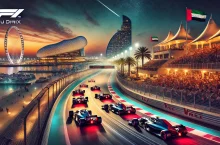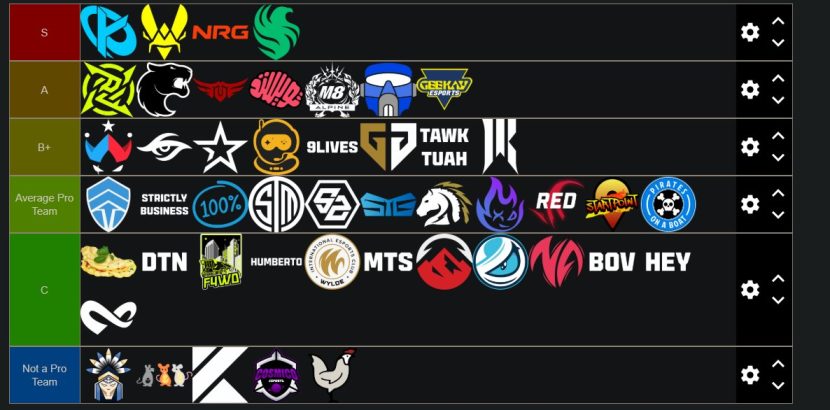
Happy New Year 2025 Images: Ring in 2025 with heartfelt New Year images for your loved ones

Year-Ender 2024: Transformation in education; insights and trends to shape 2025

Happy New Year 2025: From Kitty Su to Dear Donna – Here’s list of top party spots in Delhi-NCR for thrilling celebration

Transrail Lighting makes positive debut; lists at 36.5% premium on NSE
Fashion collaborations and themed merchandise are booming, with teams and players becoming trendsetters and cultural icons. Globally, partnerships with brands like Gucci and Adidas have created bespoke esports-inspired collections. This year, we expect to see a surge in esports personalities endorsing not just gaming peripherals but also lifestyle products such as apparel, fitness gear, and wellness initiatives.
In India, the growing appetite for live music experiences is merging with esports, creating hybrid events that blend tournaments with cultural activities. Performances by artists at esports tournaments are becoming a staple, with events like DreamHack setting the stage for such intersections of gaming and youth culture. These trends signal the ever-growing influence of esports as a movement that transcends gaming and integrates deeply into modern lifestyles.
Increased Institutional Support
One of the most promising developments in recent years has been the increasing recognition of esports by governments and institutions. In India, for example, the government’s official recognition of esports as a sport has catalyzed its growth. Initiatives such as school-level esports tournaments and the inclusion of esports in academic curriculums are nurturing talent at the grassroots level.
In the dynamic world of youth entertainment, esports has carved out a unique space over the past decade. What began as niche competitions in dimly lit LAN cafes has transformed into a multi-million-dollar global industry, captivating audiences across geographies. Today, tournaments draw thousands of attendees and millions of online viewers, professional esports players draw respectable salaries, and gone are the days of teams having to bend over backwards for goodies and returnable equipment from brands under the guise of sponsorships. As we step into 2025, the evolution of esports is more apparent than ever, with the industry becoming an integral part of mainstream youth culture. This article explores the key trends shaping esports this year and the roadmap for its continued journey as a dominant force in youth entertainment.
The Evolution of Monetization Models
While the future of esports is undoubtedly bright, challenges remain. Scaling operations for large-scale tournaments, ensuring sustainability in a rapidly evolving market, and addressing the disparity in infrastructure across regions are hurdles that require collaborative efforts to overcome. Looking ahead, 2025 promises to be a year of continued growth and innovation for esports. The integration of gaming with mainstream entertainment, advancements in technology, and a focus on grassroots development will drive the industry forward. As esports matures, it will not just be a spectator sport but a participatory cultural movement that defines the way youth engage with entertainment. Esports stands as a testament to the power of technology, creativity, and community, a reflection of what youth entertainment can achieve in the digital age.
Esports is no longer just about competition; it has evolved into a vibrant lifestyle movement, influencing how people dress, socialize, and spend their time. From high-profile collaborations like Imagine Dragons’ partnership with Riot Games and their iconic League of Legends anthem to the global success of Riot’s Arcane series on OTT platforms, esports is shaping mainstream entertainment. Crossovers are also becoming more prominent, with international sporting icons like Neymar Jr. actively engaging with gaming audiences.
The Rise of Hybrid Experiences
Esports has consistently pushed the boundaries of revenue generation, and 2025 is no different. In its early stages, monetisation primarily came in the form of only prize pools and sponsorships. As the audience expanded, we saw the rise of media rights with streaming platforms vying to broadcast the best tournaments. It wasn’t long after that events like BGMS caught the attention of traditional media channels like Star Sports.
By Akshat Rathee
Interactive zones at tournaments, immersive fan engagements through AR-based applications, and virtual meet-and-greets with players are bringing esports closer to fans than ever before. This blend of physical and digital experiences across adjacent youth culture activities ensures that esports remains accessible while delivering the excitement of traditional live sports.
Technological Innovations
With a proven audience overlap, integrating esports tournaments within lifestyle and pop culture events is a low-hanging fruit in 2025.
Esports tournaments then leverage these narratives through show matches, tournament promos and match commentary, creating memorable moments that transcend the game itself.
The author is co-founder and MD of NODWIN Gaming. (Views expressed are the author’s own and not necessarily those of financialexpress.com)
The Role of Storytelling
Today, in addition to the above, merchandising and lifestyle branding, ticketing for live events, direct viewer monetisation via subscriptions, micro-transactions and loyalty programs, and innovative experiential marketing at tournaments are additional revenue streams that continue to grow the industry for all stakeholders.
Esports in 2025 is no longer confined to digital or physical realms—it thrives at the intersection of both. Hybrid events that combine live audience participation with online streaming have become the norm. These events allow fans to enjoy the energy of in-person gatherings while expanding their reach across online platforms. Tournament organisers like Starladder are pioneering new Augmented Reality viewing experiences for esports fans, while Valve has experimented with virtual reality initiatives for online spectators of their penultimate tournament – The International.
Challenges and the Road Ahead
Hybrid event models are another game-changer, merging physical and virtual elements to create inclusive and far-reaching experiences. With advanced CMS platforms and data analytics, esports IPs are delivering personalised digital touchpoints, enhancing fan engagement and setting the stage for even more technological breakthroughs in the future.
Such institutional support is not limited to India. Across the globe, colleges and universities are establishing esports programs, offering scholarships, and even creating dedicated esports arenas. These initiatives not only legitimize the industry but also create structured pathways for young talent to enter the professional ecosystem.










 Happy New Year 2025 Images: Ring in 2025 with heartfelt New Year images for your loved ones
Happy New Year 2025 Images: Ring in 2025 with heartfelt New Year images for your loved ones  Year-Ender 2024: Transformation in education; insights and trends to shape 2025
Year-Ender 2024: Transformation in education; insights and trends to shape 2025  Happy New Year 2025: From Kitty Su to Dear Donna – Here’s list of top party spots in Delhi-NCR for thrilling celebration
Happy New Year 2025: From Kitty Su to Dear Donna – Here’s list of top party spots in Delhi-NCR for thrilling celebration  Transrail Lighting makes positive debut; lists at 36.5% premium on NSE
Transrail Lighting makes positive debut; lists at 36.5% premium on NSE





